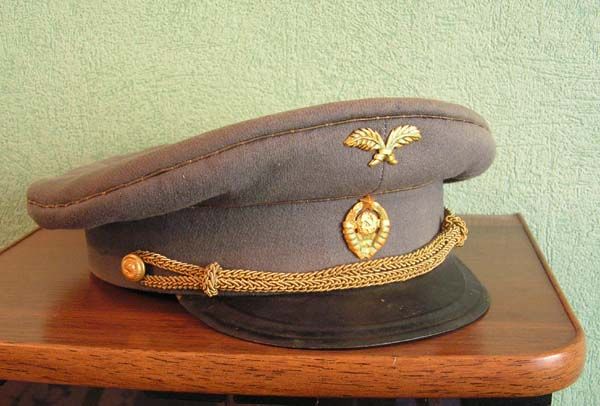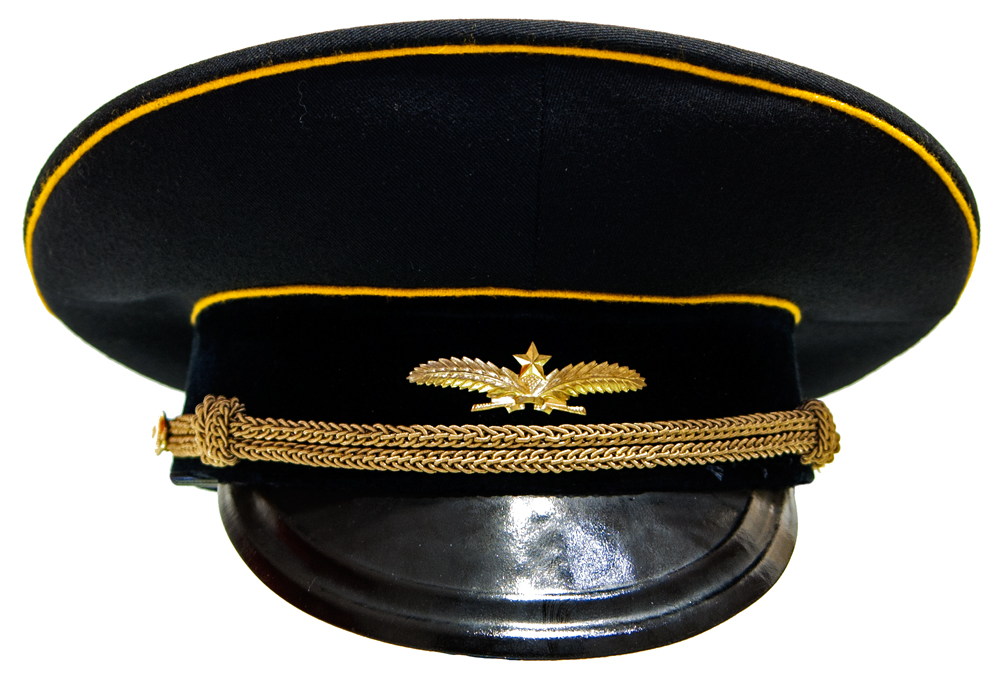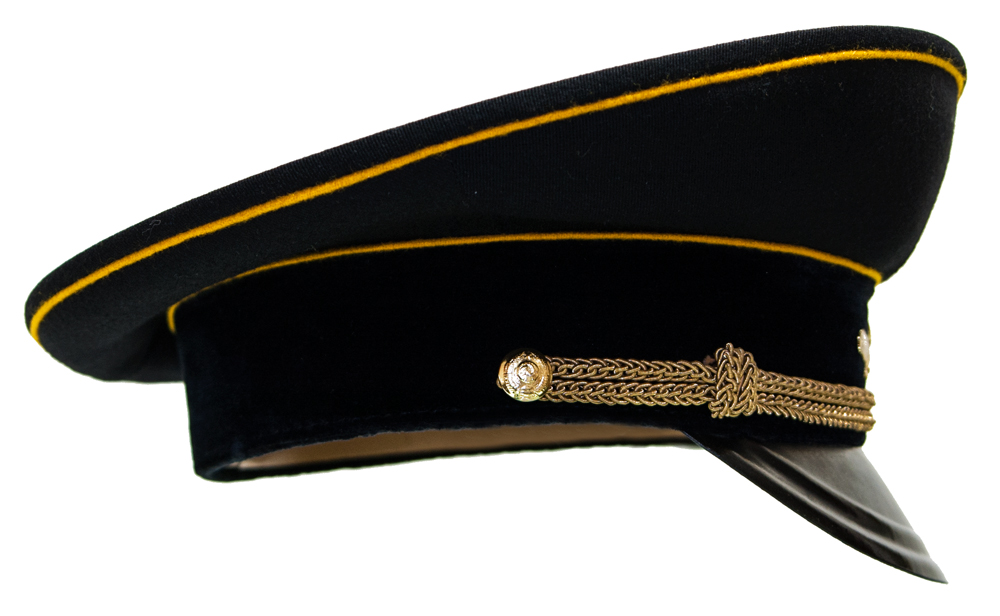 Caps of Soviet Diplomats
Caps of Soviet DiplomatsAfter the Russian Revolution, Soviet diplomats wore dark suits similar to those worn by diplomats of other countries. In 1943, however, uniforms were introduced for People's Commissariat for Foreign Affairs staff, consisting of three-piece suits with gold-plated buttons and shoulder straps. The everyday uniform was grey and the dress uniform, which even included a dagger, was black. Visor caps were part of both these gray and black uniforms. In 1954, uniforms for the diplomatic staff of the Foreign Ministry (the successor of the Commissariat for Foreign Affairs) were canceled except for the top three ambassadorial staff (Ambassador Extraordinary and Plenipotentiary and Envoys of the first and second classes). Some evidence exists that some other senior Foreign Ministry personnel also continued to wear uniforms while attending high diplomatic events in Moscow. The gray uniform was also phased out at that time. A white uniform was subsequently introduced for ambassadorial wear in hot climates. Since only senior grade personnel in certain embassy posts were authorized uniforms, it should come as no surprise that they are uniformly rare. After 1954 it also appears that all such uniforms and caps were privately commissioned - custom made by tailors or uniform shops to a general officer grade of finish.
PAGE UNDER REVISION
 Ministry of Foreign Affairs
Ministry of Foreign AffairsDiplomat Dress
1943-1954
This and the next listing illustrate the original two diplomatic uniform caps introduced as part of the 1943 uniform regulations.
The crown is relatively small - as was normal for this time period, and sewn from black napped wool. The band was black velvet for all officials.
Piping was metallic gold (gilt) - not yellow. Visors on these very early caps (made in the 40s) could have either the squared off "spade" shape shown here or be semi-circular (rounded).
After the mid-50s, they were always rounded. This cap has gilt filigree cords, indicating a general-officer equivalent during this period. Black oilcloth chinstraps were worn by more
junior officials - Secretary 1st Class and below. The cords/strap were held on by two gilt buttons embossed with the Great Seal of the USSR. Cap emblems of the diplomatic corps were
crossed feather-quill pens (gilded stamped metal) on the crown and the Great Seal of the USSR as a cockade pinned through the band.
The cap as shown here was phased out in 1954, when the emblems were simplified and the shape was modernized.
Very Rare
 Ministry of Foreign Affairs
Ministry of Foreign Affairs
Diplomat Service
1943-1954
This is the everyday service version of the above cap. Both crown and band are in a diagonal weave wool blend and piping is in the same gilt cord as used on the dress cap.
Once again, visors could be either spade shaped or semi-circular - at least in the 1940s. This cap has the gilt filigree cords of an Ambassador or envoy.
Buttons and emblems remain the same as discussed for the black dress visor cap. The gray diplomatic uniform was abolished in 1954 coincident with the changes in the wear of the dress uniform already discussed.
Very Rare

 Ministry of Foreign Affairs
Ministry of Foreign Affairs
Diplomat Dress
1954-1991
Although theThese photographs illustrate the second and last model of diplomatic dress uniform cap. It has the larger crown (in both height and circumference) of those made after 1968, as well as simplified ornamentation.
The crown is still black - although no longer napped wool. The band is black velvet and piping was now yellow wool - vice the earlier gilt metallic cord. As discussed above, by this time only very senior officials were authorized uniforms so all caps were
general-officer equivalent. Consequently, only gilt cords were worn and the interior had silk lining and kid leather sweatbands with intertwined ribbons.
The black fiberboard visor on this cap indicates it was made in the 1970s. Later caps had patent leather visors with black wool underlining. Buttons were gilt, embossed with the Great Seal of the USSR.
The earlier crossed quills emblem was removed from the crown and redesigned, including the addition of a gilt star - as you can see pinned to the band.
Rare
Ministry of Foreign Affairs
Diplomat Dress (Hot Climate)
1955-1991
These photographs show the cap belonging to the "hot weather" uniform worn by senior diplomats in desert or tropical climes, as authorized in 1955.
This cap reflects very late production characteristics.
While designed for hot weather - with white fabric and a linen lining - the crown is permanent, not a removable cover. The band is covered in the same
white fabric as the crown and the piping is the same yellow wool used in the black dress cap. Gilt filigree cords are secured by gilt plastic buttons portraying the Great Seal of the USSR.
The visor is black patent leather with black wool underlining and the interior is general-grade. The cockade is the same later crossed quills and star used on the cap above.
Rare